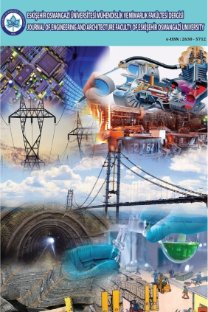ETKİN VİBRASYONUN BETON KALİTESİNDEKİ ÖNEMİ
Beton kalitesi, belli bir süreç içerisinde farklı aşamalardan smeydana gelen işlemlerin sonucunda şekillenmektedir. Kaliteyi etkileyen bu faktörlerin en önemlilerinden biri de üretilen taze betonun kalıbına yoğun ve homojen olarak yerleştirilmesi aşamasıdır. Yerleştirmede en etkili yöntemlerden biri vibrasyon uygulamasıdır. Etkin vibrasyonun bilinen önemine vurgu yapmak amacıyla lâboratuvarda deneysel bir çalışma gerçekleştirilmiştir. Bu çalışmada, C20 ve C35 sınıfında iki farklı çökmede üretilen betonların A grubu hariç diğerlerine (B) ilk vibrasyon uygulandıktan sonra yine C grubu hariç diğerlerine 30, 60, 90 dakika sonunda ikinci bir (tekrarlı) vibrasyon yapılmıştır. Standart koşullarda saklanan betonların 7 ve 28 günlük basınç dayanımları bulunduktan sonra tek vibrasyon uygulanan her serideki betonun 28 günlük basınç dayanımı referans alınarak o serideki diğer sonuçlar buna göre değerlendirilmiştir.
IMPORTANCE OF ACTIVE VIBRATION ON CONCRETE QUALITY
Quality of concrete is formed throughout different stages occurred within some determined time. One of the important factors affected the quality of the concrete is the stage in which the concrete is placed inside the forms as dense and uniform as possible. One of the important methods of placement of the concrete inside the forms is vibration. An experimental study has been carried out to emphasize known importance of the vibration. In this study, three groups of C20 and C35 class concrete mixtures were prepared. In group A, vibration was not used. In group B, vibration was applied when the concrete was placed and 30, 60 and 90 minutes after the concrete was placed. In group C, vibration was used only when concrete was poured into the forms. After the samples were cured at standard conditions, compressive strengths of the samples were found at 7 and 28 days. Then, the compressive strength of group B at 28 days was taken as reference strength and the strength of other samples were compared with the reference strength.
___
- [1] G. H. Tattersall and P. H. Baker, “The Effect of Vibration on the Rheological Properties of Fresh Concrete”, Magazine of Concrete Research, Vol. 40, No. 143, pp. 79-88, June 1988.
- [2] A. M. Akman, “Betonun Vibrasyonu”, İ.T.Ü. Dergisi, Cilt 35, Sayı 3, ss. 21-31,1977.
- [3] C. A. Vollick, “Effect of Revibrating Concrete”, ACI Journal, Proceedings, Vol. 54,No. 9, pp.731-732, Mar. 1958.
- [4] M. Uyan ve B. Y. Pekmezci, “Tekrarlı Vibrasyonun Beton Özelliklerine Etkisi”,Beton Prefabrikasyon Dergisi, Sayı 60, ss. 5-8, Ekim 2001.
- [5] M. N. Khalaf and M. H. A. Yousif, “Effect of Revibration on the Stability and Compactibility of Concrete”, Cement and Concrete Research, Vol. 15, pp. 842-848,1985.
- [6] W. A. K. Altowaji, D. Darwin and R. C. Donahey, “Bond of Reinforcement to Revibrated Concrete”, ACI Journal, pp. 1035-1042, Nov-Dec. 1986.
